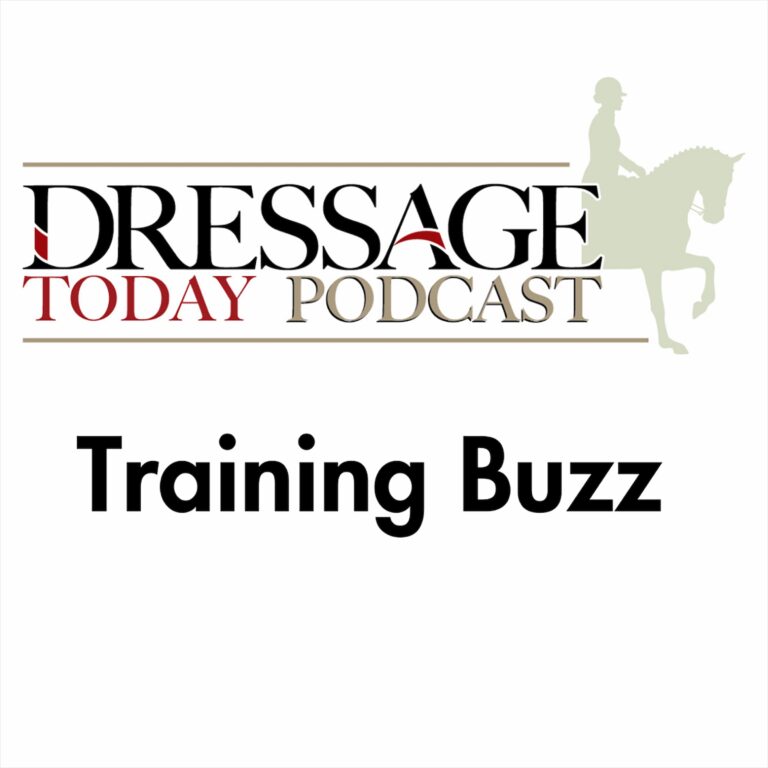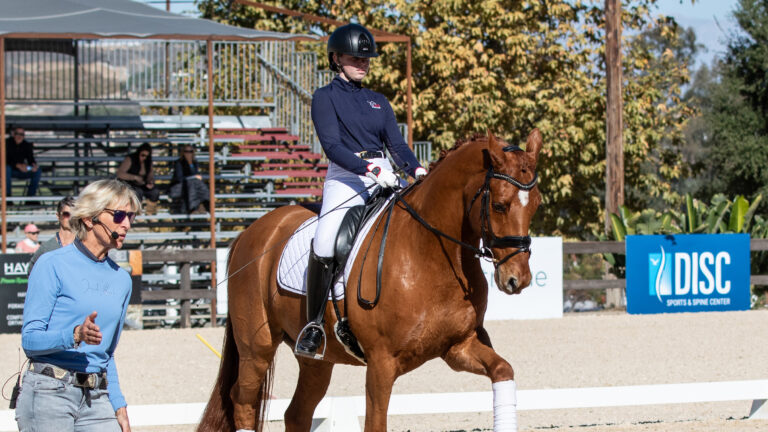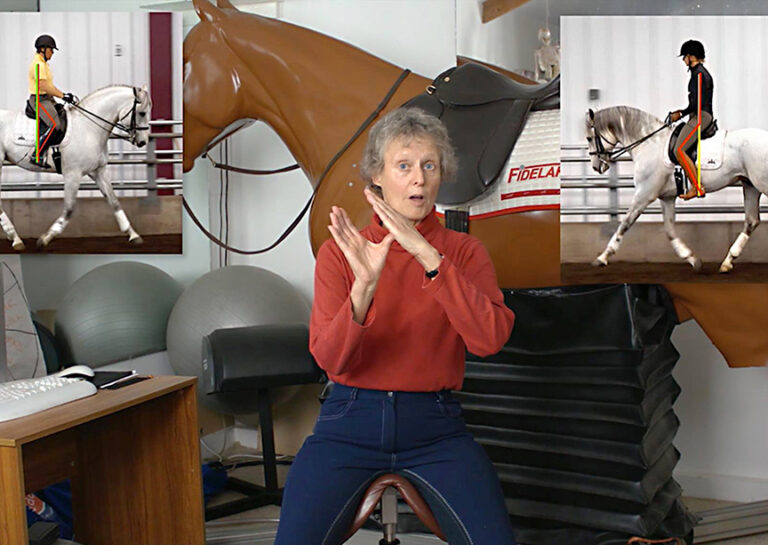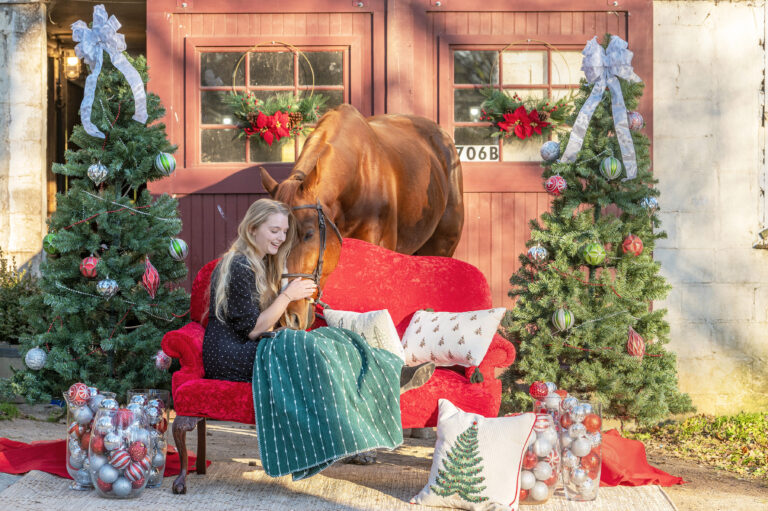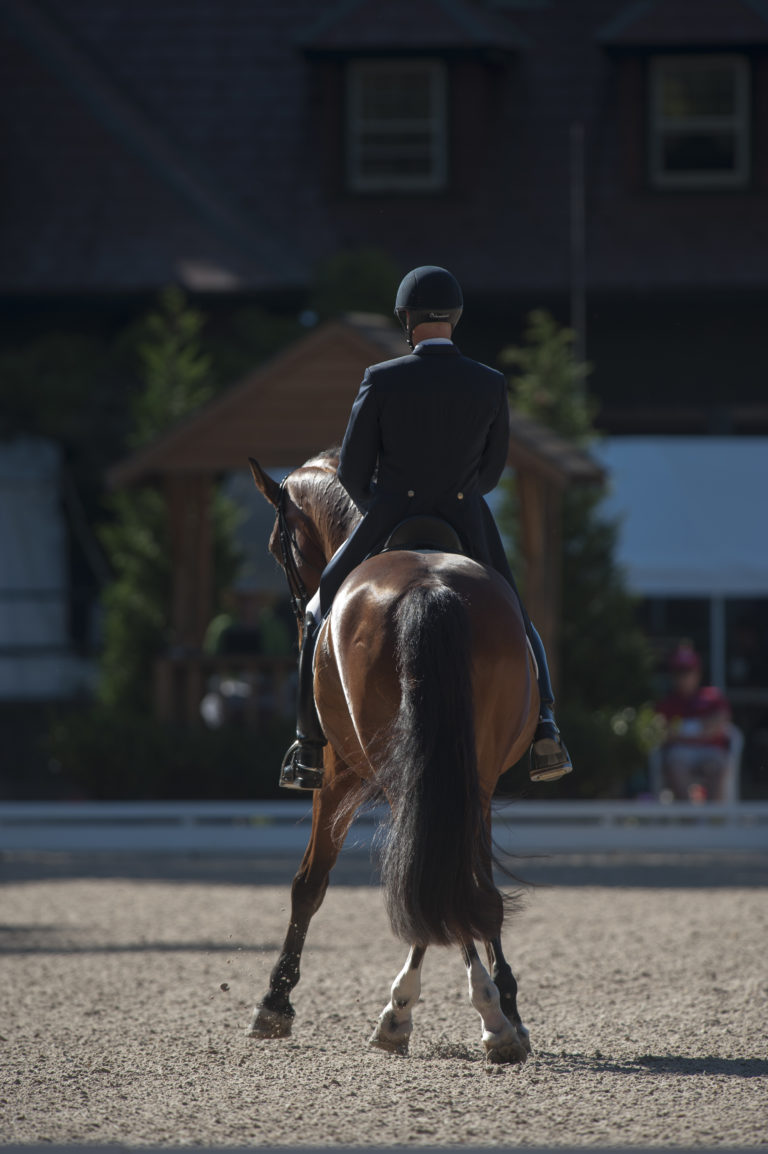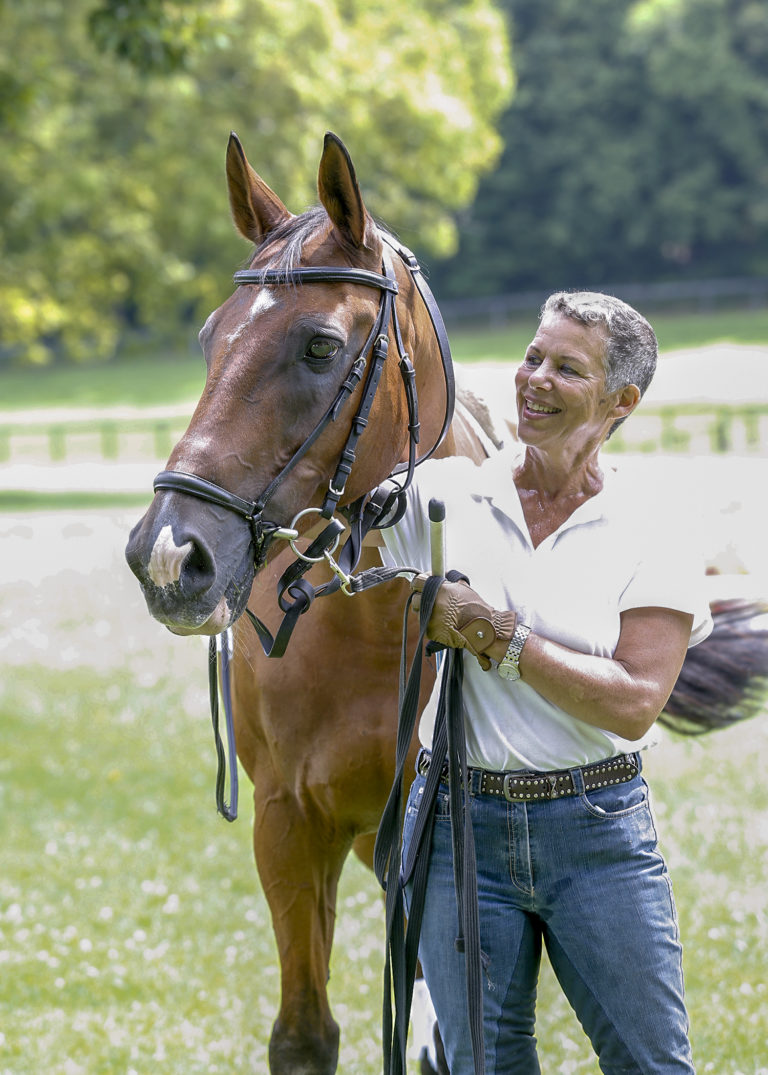At some point in my career as a dressage rider and judge, it dawned on me that dressage is simple (although not necessarily very easy). It is really about understanding that there are only two ways a horse can be in dressage: He can be either straight or bent. Then, understand how all the movements–especially the lateral movements–tie together in such a logical way and are conceptually so simplistic. A correctly bent horse is bent primarily at the loin area (equivalent to the waist of a human). The rib cage, which has little lateral flexibility, just moves in the direction to which the horse is bent. The neck should continue as a logical extension from the rib cage, and the horse should be flexed at the poll. The neck of the horse should not appear to be bent by the rider. All the (lateral) movements in dressage tests lay out a sequence of how and when to introduce movements to a horse. One starts with big circles, makes them smaller, then introduces the shoulder-in, followed by the travers and so on. The movements build from less difficult to more difficult for the horse. But again, the difficulty lies in the degree of collection, not in the character of the movement itself.

Learn more about dressage and dressage moves, with this FREE guide?Dressage Moves: The Turn on the Forehand, Half Halt and Leg Yield Dressage Movements.?
Let me give you a few examples to illustrate how all the lateral movements relate to each other. If you’re riding on a circle, you have a bent horse. If you’re coming out of this circle and continue in a shoulder-in down the long side, you have exactly the same degree of bend that you had when on the circle. Similarly, if you’re coming out of a circle into travers, you’ll have the same arc you had when you were on the circle. The only difference between riding a circle, a shoulder-in and a travers lies in the direction of travel and the aids of the rider. In the shoulder-in, your inside leg is pushing a little more, while your outside leg is holding the haunches. In travers, your outside leg is more active, while your inside leg holds the pushing. Although the aids are a bit different for the rider, for the horse the movement is basically the same.
Dressage riders tend to make things more difficult than they actually are, because they often look at it from their own perspective (the difference in the aiding) instead of the horse’s perspective. Instead of looking at the lateral movements as related, they look at them as if they were separate movements they have to learn for a dressage test. They also practice them as if they were separate, new movements to learn. Next time you ride, explore how related the lateral movements are. For instance, if you ride a correct shoulder-in, see how simple it is to switch to travers. All you have to do is slide the horse through the arc of the circle. In other words, ride the shoulder-in as if you were going into a circle and the travers is as if you were coming out of a circle. Conversely, if you’re in a travers down the long side and want to change to a shoulder-in, all you have to do to is slip your horse around a little arc of the circle as if you were going into it, and you’re in the shoulder-in.
The same principle is true for the half pass. A half pass is nothing more than a travers on a diagonal line. Therefore, it requires the same set-up of bend. I see many riders, including those at the FEI level, who are too focused on the movement itself and fail to bend their horses in the half pass. They ride the half pass with a straight horse moving sideways.
A more experienced rider very often will prepare his horse by riding a shoulder-in just prior to starting the half pass. This way, the horse is flexed and bent in the direction in which he is supposed to go with his shoulders. Let’s say, for instance, your horse is doing a half pass to the right, going from K to M. When your horse comes through the corner and is set up in a shoulder-in attitude, as soon as his shoulders are headed toward M, all you have to do is add some outside leg. It’s like going from the shoulder-in to the travers again. Note: If a judge were standing at K or M, looking at the diagonal line to M as the rider goes across the diagonal, he would see a travers. But, since the judge is seated at C, he sees a half pass.
All the lateral movements (except for the leg yield) require the same type of bend. In the half pass, it often happens that the judge remarks that there’s not enough bend. Not quite understanding that the half pass is related to the travers or shoulder-in, the rider starts to push his horse too much with his outside leg in order to establish bend, which causes the hindquarters to precede. The bend is still lacking. What he should do is establish proper bend to begin with. This is crucial in order to switch back and forth between the lateral movements. In movement combinations that require changes of bend–the zigzag canter half pass, for example–riders not quite understanding that proper bend is a main ingredient in all lateral movements often get into trouble.
In the Prix St. Georges canter zigzag, the rider starts the left half pass at F and is supposed to do a flying change at X. Then he does half pass back to the right toward M. What I see is that few riders correctly re-bend the horse to the new direction of travel. Most of them make the flying change and start to push the horse back again, and the hindquarters precede. This is because these riders never establish the new bend. To correct this, think of the lateral movements from the perspective of riding circles. After you ride half pass to the left, you would not be able to circle to the right without first establishing bend to the right. If you have the haunches positioned so they’re preceding the forehand, the horse simply can’t circle to the right.
So, to understand how simplistic this sequence of movements becomes when paying attention to the bend, do the following for the Prix St. Georges zigzag at canter: Coming through the corner at F, bend your horse left as if you were going to do a shoulder-in. As soon as you have the bend, begin the half pass. To do the change of direction and the flying change, you have to give yourself at least three steps–one to the left, one to straighten up and then one to change the bend to shoulder-in right. Ask for the flying change as you start the new shoulder-in. Then, when your horse has his shoulders pointing to M, half pass to M with the correct bend.
Instead of focusing on a movement, focus on the correctness of a movement as far as the horse is concerned. Keep it as simple as that. For lateral movements, this means making sure your horse is bent correctly. If you look at it from the perspective of riding the arc of a circle, you can be in a shoulder-in or a travers. If you want to work with the opposite bend, renvers or counter shoulder-in can also be done on the same circle.
Gail Hoff-Carmona, PhD, is a U.S. Equestrian Federation “S” dressage judge and a sport horse breed judge. A U.S. Dressage Federation gold medalist, she teaches and trains horses to Grand Prix at Los Alamos Dressage Center in Ojai, Calif.
This article was first published in the July 2007 issue of Dressage Today magazine.


